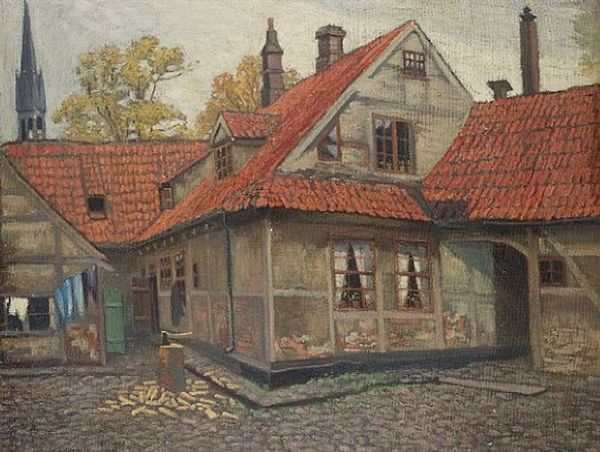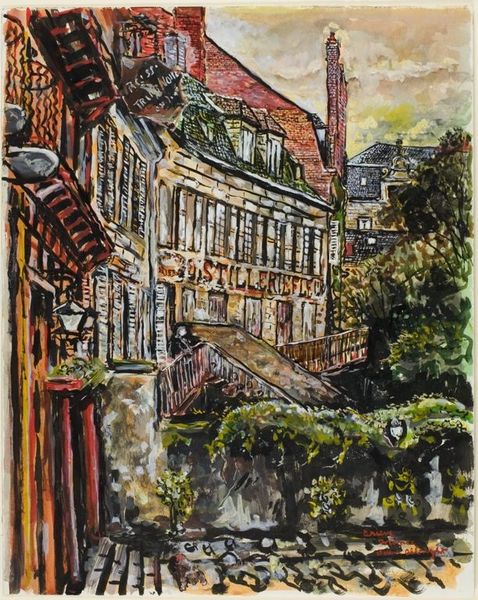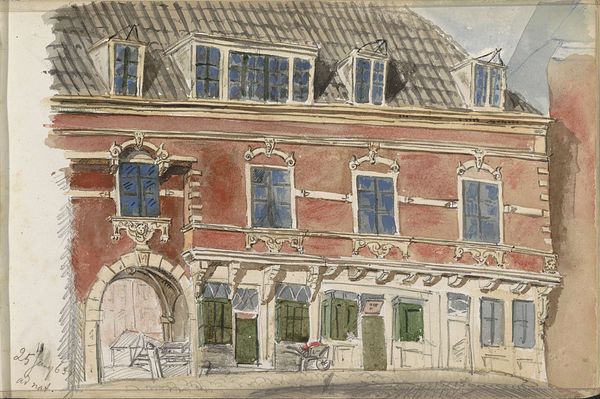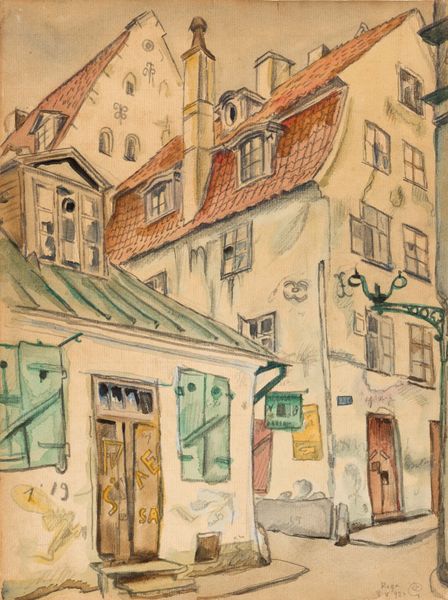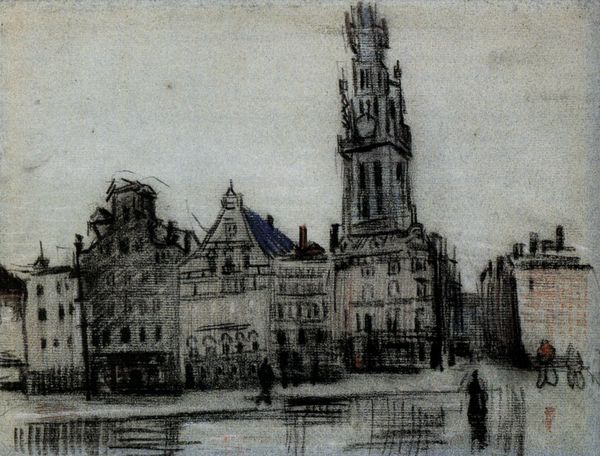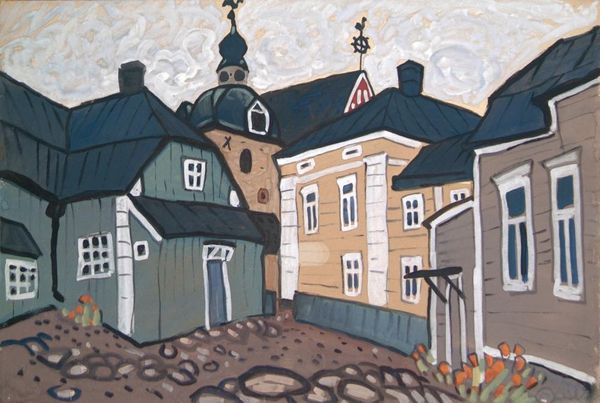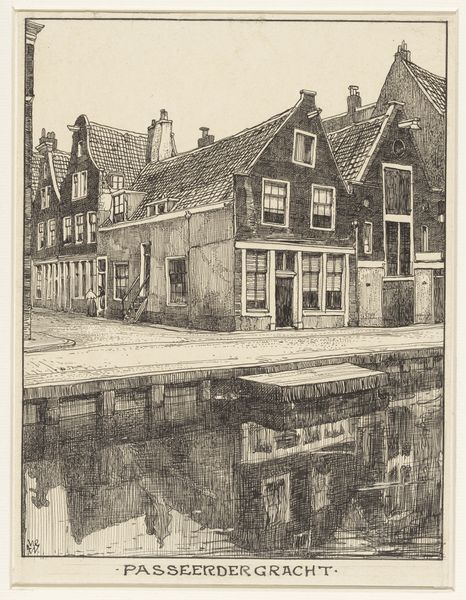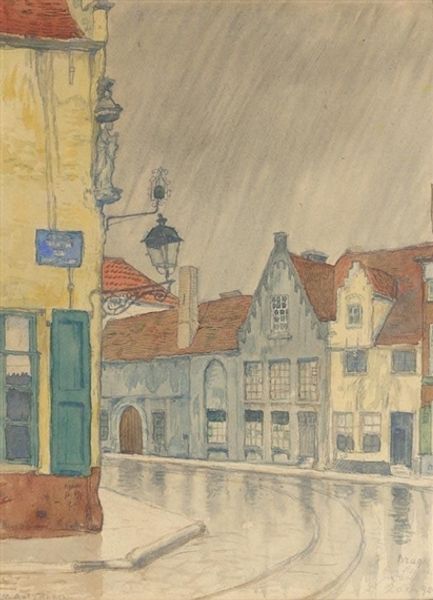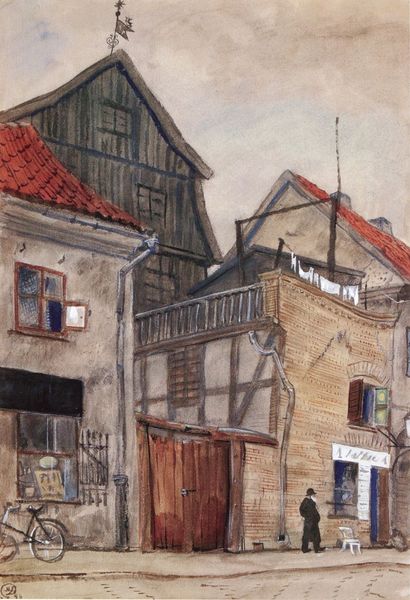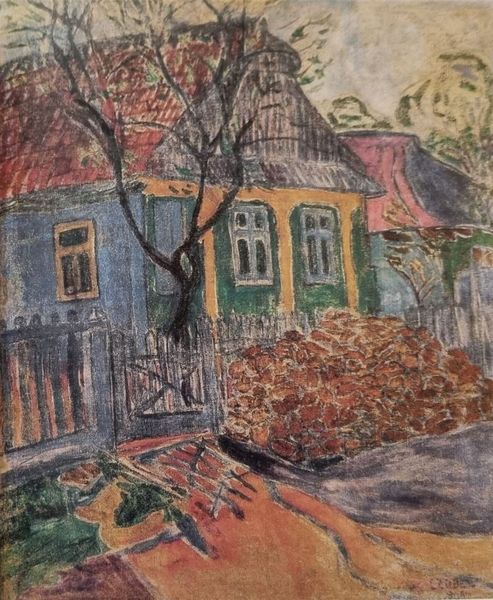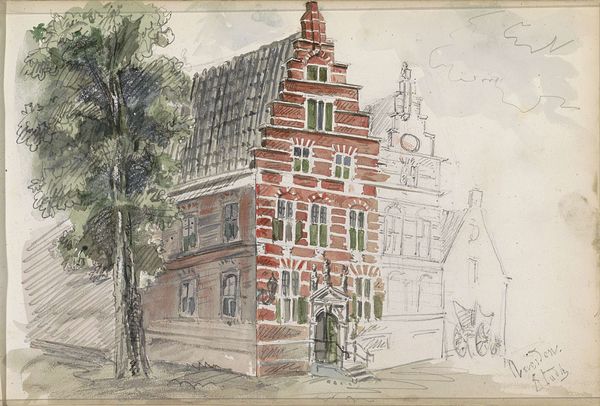
Copyright: Public domain US
Editor: This is Mstislav Dobuzhinsky's "Channel in Haarlem," created around 1910 using watercolor. The first thing that strikes me is the texture, particularly in the reflections in the water. What do you make of it? Curator: Precisely. Notice the distinct planes defined by the reflections. The texture arises from the layering of pigment and the artist’s controlled application of water, allowing for subtle gradations and bleeds. How does the placement of the tree contribute to the overall structure of the work? Editor: Well, it is strongly vertical and asymmetrical and appears to act as a kind of framing device. How do those architectural shapes add to the picture? Curator: Observe how Dobuzhinsky juxtaposes the solid geometry of the buildings with the fluid, almost ethereal reflections. Consider the contrasting textures of the brickwork and the smoothness of the water. Note, too, the slight distortion in the reflections. What might that suggest about the artist's intent? Editor: Perhaps it disrupts the realism just enough to prevent a straightforward interpretation? Curator: Indeed. By subtly fracturing the reflections, Dobuzhinsky shifts the focus away from mere representation, towards a deeper engagement with the formal qualities of line, texture, and composition. Editor: That makes perfect sense. I was too quick to get caught up in trying to understand what the painting was ‘about,’ but that formal tension is perhaps all that matters. Curator: A keen insight. It serves as a reminder that the aesthetic experience lies primarily in the sensory apprehension of form.
Comments
No comments
Be the first to comment and join the conversation on the ultimate creative platform.
